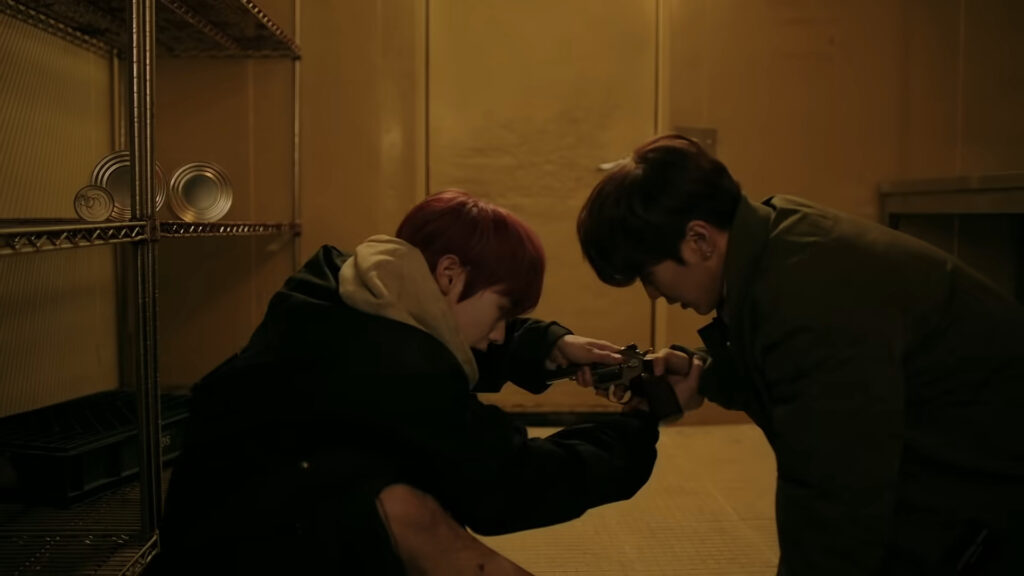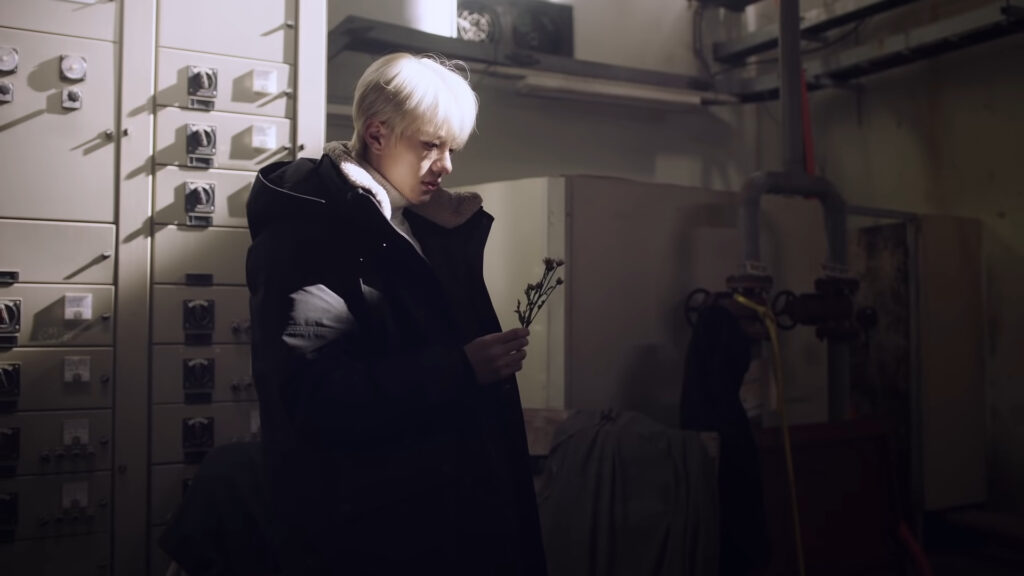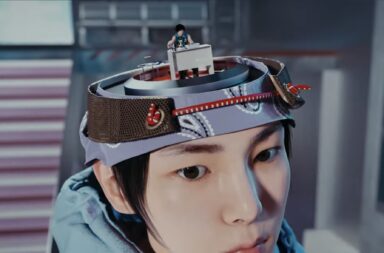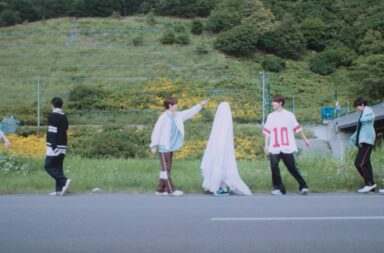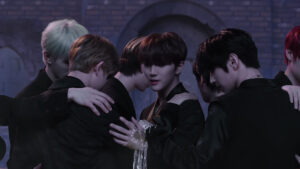
K-pop is no stranger to the motif of fire. The element is often used to reflect attraction in songs about love; in Twice‘s b-side “Firework“, for example, they sing, “My feelings for you slowly rise / Fire in my heart”. Fire is also often evoked to signify charisma—”we ’bout to set the roof on fire, baby” (2NE1‘s “Fire”)—and youthful passion and abandon—”Just live how you want . . . / Burn it all up” (BTS‘ “Fire“).
Looking at its title alone, Golden Child‘s “Burn It” (or “I’ll Embrace You” in Korean) points towards romantic attraction. But a closer look reminds us that the symbolism of fire is, in fact, much more multifaceted. “Burn It” eschews common associations with passion and charisma in favour of the intriguingly contradictory meanings of fire: as both destruction and salvation.
The article you’re about to read, as well as countless others on the site, are the result of much time and effort from our team of volunteer staff. Do consider donating via Ko-fi (ko-fi.com/seoulbeats) or joining our Patreon (patreon.com/seoulbeats) to show your support!
These associations have various origins. The idea of destruction comes from the physical properties of fire; its heat is capable of reducing both the living and non-living to ashes. The idea of salvation comes from Biblical evocations of fire as a form of purification, such as in “He [Jesus] who is coming after me . . . will baptize you with the Holy Spirit and fire” (Matthew 3:11). Salvation—the deliverance from harm and evil—also connotes a kind of rebirth, a symbolic meaning of fire that is supported in mythology (think of how the phoenix combusts and rises from its ashes), and also in ecology (pyrophytic plants like the eucalyptus require fire and ash-fertilised soil for its seeds to sprout).
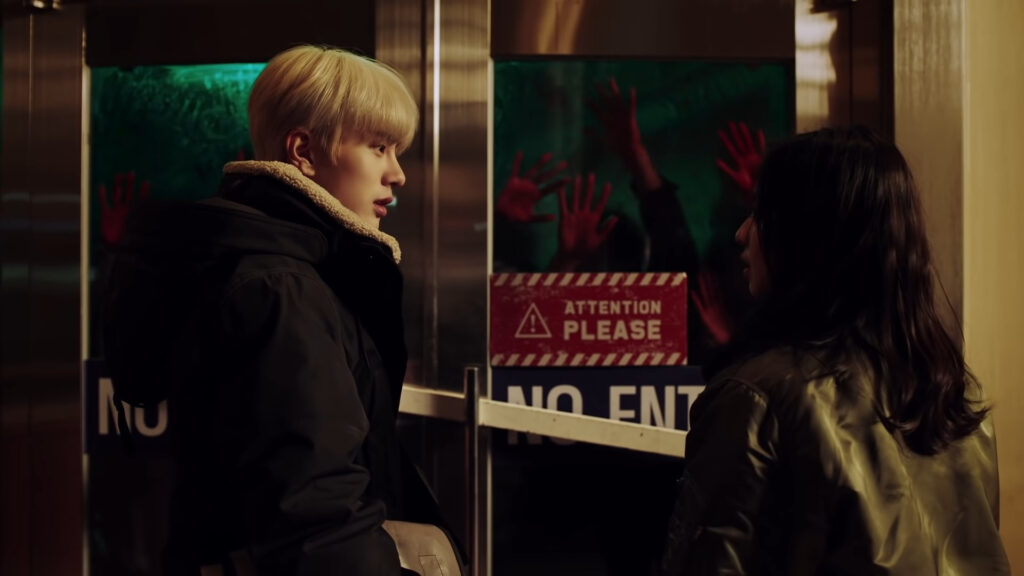
Nowhere is this dichotomous symbolism captured as strikingly as in the association of fire with zombies. Neither fully human nor completely inhuman, zombies are trapped between realms. They are doomed to endlessly attack humans, which robs them of the will and control that the living possess, but they are also denied the state of rest bestowed upon the dead. Setting fire to masses of zombies swiftly destroys the threat they bring, but also saves them from their entrapment by ending their undead existence.
The MV for “Burn It” depicts a zombie apocalypse; in light of this, the fire motif seems to make sense, as the answer to the apocalypse. But much like with the title, the story departs from expectations. The MV definitely contains the suspense central to the zombie subgenre, as well as some truly frightening moments. But it shies away from the gory spectacles that often accompany zombie flicks, opting for a more subdued tone, holding moments of stillness and tenderness instead of packing the scenes with action and visual excess. These artistic choices, together with narrative details, give form to the MV’s central message of empathy and acceptance for that which we fear and reject.
Note: This MV contains images of zombies and injuries that some viewers might find graphic.
“Burn It” begins with its titular image of an embrace, timed aptly with Joochan‘s opening promise—”I’ll embrace [it/ you]”. Showing this particular scene at the start not only piques the viewer’s curiosity about why the female lead (Lee Soo-min) is crying but also highlights its thematic importance. The rest of the MV follows the members as they attempt to survive the apocalypse. Y valiantly distracts attacking zombies to let Bomin and Soo-min escape; Seungmin, Jibeom, and Donghyun forage for supplies before going into hiding; and Daeyeol and Jangjun look for medicine for an ailing Donghyun.
These scenes of escape are familiar enough to anyone acquainted with zombie films, but the suspense they create is soon taken to another level. Soo-min, on the run with Bomin, secretly examines a nasty gash she sustained from their narrow escape, and Joochan looks worriedly at a wound on Tag‘s shin. It’s only a matter of time before they, too, turn into zombies. To have hordes of zombies in hot pursuit of you is terrifying, but there is a sliver of comfort in the fact that they are still reassuringly Other; that is, you can clearly draw a line between “them” (the zombies, the attackers) and “us” (the human, the victims). But when someone close—a lover, a friend, or in Jaehyun‘s case, a parent—becomes infected, the imaginary line, and the psychological safety it brings, vanishes. You can no longer ignore the chilling reality that “we” are just a bite, a scratch away from becoming “them”.
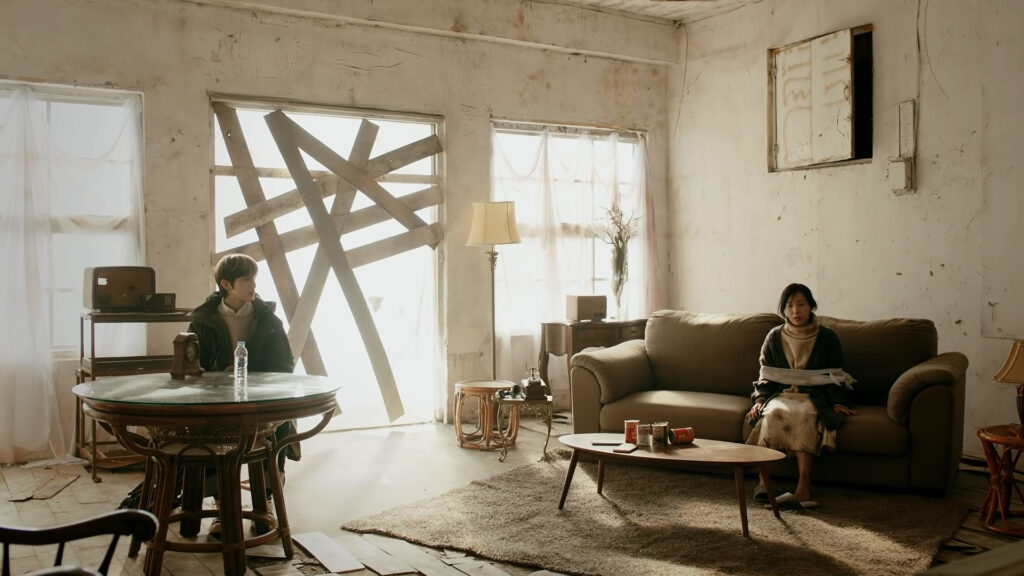
The fear that this knowledge inspires is given visual form by the camerawork. The camera hardly lingers; it intercuts frantically from scene to scene, and even within each scene, the individual shots are taken from a disorienting number of angles and distances. It wobbles and tilts at an angle, creating a sense of instability that reflects the fear of this struggle for survival, a fight to not become a terrifying, mindless existence that brings harm to any human that crosses its path.
The fear of transformation is felt by those who witness their loved ones turn into zombies, but it is felt even more keenly by the infected victims. The MV draws attention to this by lingering on Soo-min. In a close-up shot that captures her anguish as she examines her wound in secret, the camera is unfocused, and the sweeping lights in the background further help to externalise her dread.

Soo-min quickly hides the wound and offers up a weak smile when Bomin turns around and slips away in the quiet of the night when she senses her time is running out. She can’t bear having a witness to her loss of humanity and agency, but more than that, she fears what she will do to others when that moment comes—she binds herself in desperate hopes that it can prevent her from harming anyone.
When faced with this moment of tragedy, those who remain stand at a crossroad. Their choices are captured strikingly in a fleeting juxtaposition of two images: a gun and a flower. They can put a violent end to the zombie’s existence, or they can show compassion to it. It’s not an easy choice to make. The act of killing a zombie isn’t outright cruel—it can also be a merciful deliverance from its doomed fate—while embracing a zombie also comes with the risk of turning into one.
For Bomin, Jaehyun, and Joochan, however, the choice is clear. Against Tag’s pleas, Joochan decides not to shoot him; Jaehyun calls out to his mother as she transforms, and leans against her as he tightly clasps her hand; Bomin wraps his arms around Soo-min in a tender embrace. Their choices echo the song’s lyrics:
I’ll embrace it
I’ll embrace it
All your endlessly sad memories
I’ll take them away for you
I’ll burn them up for you
For Bomin, the risk pays off. Soo-min’s clouded vision clears; his courage in reaching out for her, despite the monster she is becoming, has pulled her back from the abyss. The image of his embrace is the heart of the MV; it’s a clarion call for empathy and acceptance of that which we fear and push away. It’s easy for a person to turn into a zombie, but “Burn It” urges us to look at this with understanding, rather than fear: to see that which is human in zombies. Empathy is the metaphorical fire that can put an end to the infectious cycle of conflicts, and usher in the dawn of better times, a promise embodied in the image of Y holding up a flame in the purple of daybreak.

Empathy and kindness surely take more courage and conviction than a position of fear and repulsion. In Bong Joon-ho‘s Parasite, Song Kang-ho‘s character muses, “They’re kind although they’re rich,” and his wife corrects him, “They’re kind because they’re rich.” When you’re struggling for survival, you hardly have the luxury to help others, to do what’s noble and right. But “Burn It” reminds us of the profound changes that understanding and acceptance can bring, a message that cannot be more timely in a world battered by disease and political and cultural divides.
(YouTube. Images via Woollim Entertainment. Lyrics via Melon.)
